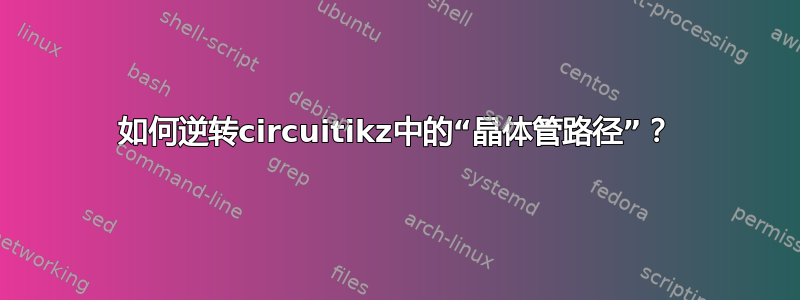
我发现了circuitikz中“晶体管路径”的存在,它非常有用,但行为很奇怪:
\documentclass{article}
\usepackage{tikz}
\usepackage{circuitikz}
\begin{document}
\begin{figure}
\begin{center}
\begin{circuitikz}[american]
\draw (0, 0) node[anchor=east]{$V_-$} to[short, o-o] ++(4, 0);
\draw (2, 0) to[Tnpn, mirror] ++(0, 2);
\draw (0, 2) node[anchor=east]{$V_+$} to[short, o-o] ++(4, 0);
\end{circuitikz}
\caption{My first circuit.}
\end{center}
\end{figure}
\end{document}
这将生成:
看起来不错,但代码的构建却“倒退”。晶体管路径从发射极到集电极,或者从 V- 到 V+。电路的思维模型往往是从 V+ 到 V-,从上到下。
这可以反转吗,以便晶体管路径从集电极到发射极(对于 npn 晶体管)?
答案1
作为Luis Sibaja 评论,如果您想反转标准方向(就是那个方向,因为......它确实发生了),您可以使用invert。
如果你厌倦了使用所有这些反转,你可以使用 Ti 的力量钾Z 样式:
\documentclass{article}
\usepackage[RPvoltages]{circuitikz}
\ctikzsetstyle{romano}
\tikzset{npnT/.style={Tnpn, invert}}
\begin{document}
\begin{circuitikz}[american]
\draw (0, 1) to[Tnpn, l=A] ++(2, 0);
\draw (0, 0) to[npnT, l=B] ++(2, 0);
\end{circuitikz}
\end{document}




